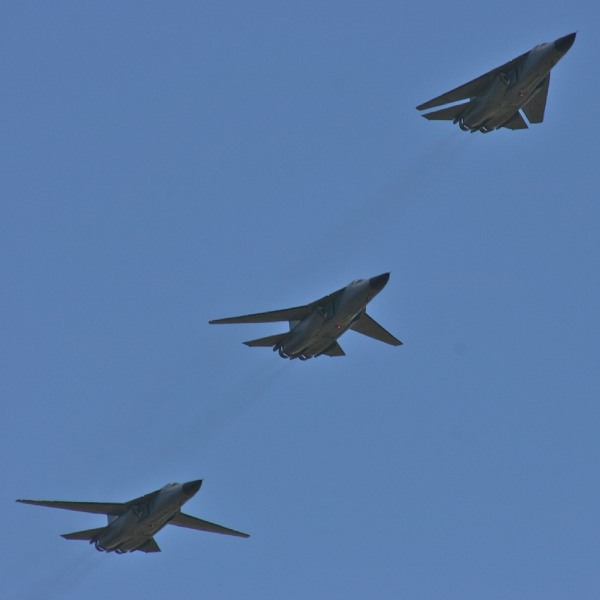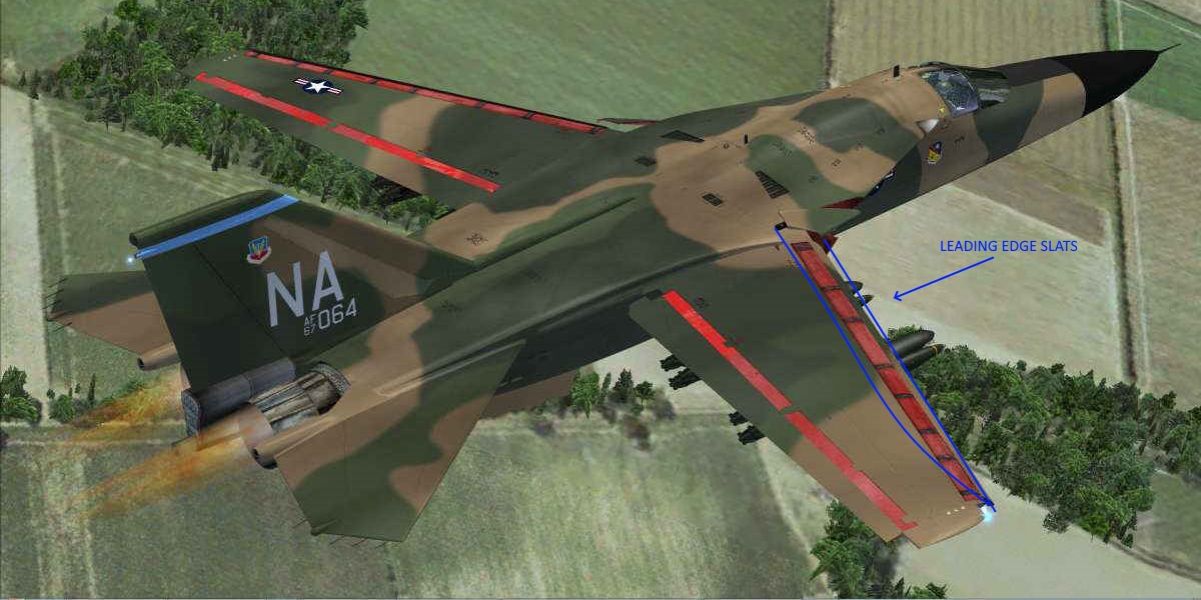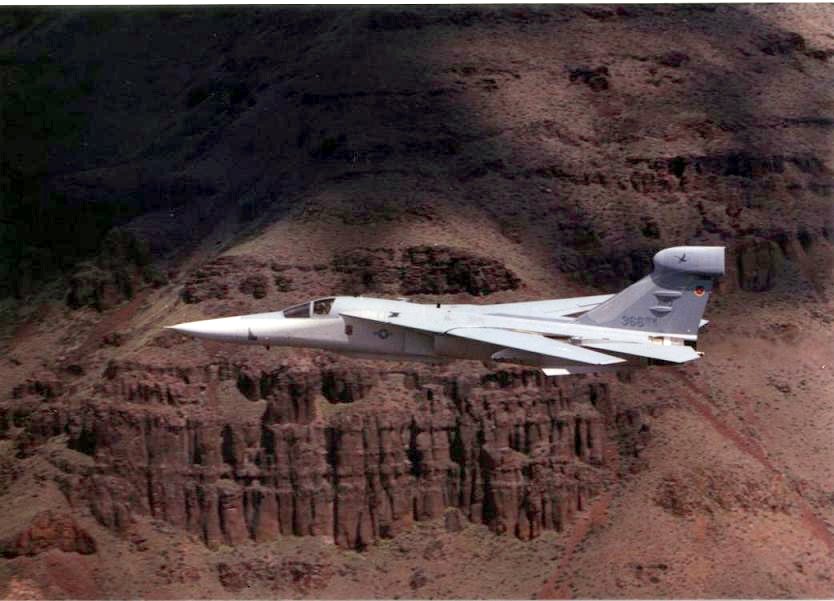The EF-111A Raven
In the 1980s and 1990s, EF-111A Ravens, often referred to as “Fat Tails” and “Spark Varks” (the F-111 is also called the Aardvark), were used as tactical electronic jammer aircraft. 42 EF-111As were delivered to the U.S. Air Force between 1981 and 1985, and the aircraft supported several USAF missions in the 1980s and 1990s.
To build the EF-111A, Grumman started equipping 42 F-111A Raven aircraft with jamming equipment in the 1970s. High-powered transmitter antennas were located in a 16-foot-long, canoe-shaped radome on the fuselage’s underside, and receiving antennae and additional equipment, including a processor to detect hostile radar emissions, were housed in a fin-tip pod on the vertical stabilizer. About four tons of sophisticated gear were involved. The right seat crewmember, or Electronic Warfare Officer (EWO), monitored the jamming equipment instead of performing flight-related duties because the equipment required full-time attention while in flight.
Grumman/General Dynamics Corp. started producing more EF-111A modification kits in 1984, allowing the aircraft to perform three different roles: penetration/escort, close-in jamming, and standoff jamming.
Similar to the F-111, the EF-111A was equipped with variable-sweep wings, which allow for wing configuration changes while in flight. Outstanding aerodynamic efficiency was given by the wing. The EF-111 could take off and land in as little as 2,000 feet when its wings were completely extended. It could fly at high or low altitudes at supersonic speeds when its wings were fully swept back.
EF-111A EWO navigator
Jim Howard, former EF-111A Raven EWO, recalls on Quora.
‘When I was a USAF EF-111A nav/EWO I had only one serious emergency (lots of ‘abnormals, like failed generators, but none that were scary) that really got my attention.
‘The F-111 was a swing wing airplane, the wings could be swept from 16 to 72 degrees.

‘I was an instructor EWO flying with a new pilot in England. The pilot was experienced in another fighter, but new the Vark. This was his third flight in England, and the first one that was not flown mostly in clouds.
‘This was a clear beautiful day. We flew up a low level across Scotland, driving down Loch Ness to the beautiful west coast.
‘Then we returned to our Upper Heyford base where I had the pilot ‘beat up the pattern’, so he could see all the various ground references that were helpful in flying visually near the airport.
‘On final for what we thought would be our full stop landing we configured the airplane, which in the Aardvark involves sweeping the wings most of the way forward. The leading edge slats (flaps to help you fly slow, but on the front of the wing) came down at 26 degrees wing sweep.

‘When my pilot swept the wings forward I heard an ‘oh shit’ comment from him. “It wants to roll on its back!”
’I looked at the gear/flap/slat position indicator and saw an unsafe indication for the leading edge slats. As I was grokking this my pilot asked ‘Is your slat down, because mine is not!’.
‘Mine was down.’
Asymmetric Slats
He continues
‘So we knew what we had, and it was serious. Asymmetric Slats. The F-111 wing has a bunch of moving parts. If at anytime the airplane detects an configuration it does not like it will lock the wing in whatever configuration you had at that moment.
‘The good news is that there is a checklist for this contingency.

‘More good news. We were light. Bad news: we were low on fuel.
‘We did I think fly two box patterns above the airport while we ran this checklist and consulted with the Supervisor of Flying (SOF, a senior instructor in the control tower). We both calculated a landing speed of 198 knots, much faster than our normal speed which was I think around 140.
‘Remember, energy needed to stop goes up with the square of your velocity.
‘So we go out and carefully line up for a long straight in approach, per the checklist. Everything is looking good, we have the hook down. The 8000-foot runway was kinda short for the mighty Vark even under normal conditions, let alone landing at 198 knots! Any slower than that and we would not have enough roll authority to keep the airplane right side up.
Departure end cable arrestment
‘We were planning for a departure end cable arrestment.
‘The low fuel light came on about two minutes out, but there was the runway, right in front of us, so we about as content as we could be. Of course all this time the pilot is fighting the airplane’s desire to start a continuous barrel roll.
‘All of a sudden the tower says ‘Raven GO AROUND’!
‘Both of us erupt into a string of naughty words, we were both really pissed off.
‘I tell the pilot to declare minimum fuel to discourage them from any further jerking us around.

‘So as we are flying back out for a second long straight in I see that the tower let another Vark land in front of us. I’m thinking ‘If that guy blows a tire we are totally screwed’. That was because we did not enough gas to go to another airport with a Vark safe arresting system. We would have been faced with the choice of probably running off the end of the runway at nearby Brize Norton or punching out.
EF-111A Raven Cable arrestment
‘Thankfully that airplane landed normally, and we came in for landing. After touchdown the end of runway was getting pretty close pretty fast as my pilot stood on the brakes. We did catch the departure end arresting cable, the first time I had ever done that in a Vark.
‘I was expecting a Navy style sudden stop, but this cable gave a very Air Force Gentlemanly easy deceleration that left us stopped on the departure end runway numbers.’
Howard concludes;
‘When we stopped my pilot reached over to shake my hand. That was one my proudest moments in 20 years in the Air Force.
‘Postscript:
‘One of the slats had a bunch of bent metal where the slat guide track used to be.
‘We got away from that airplane as fast as we could, we didn’t want to wait around until the tires exploded.
‘When we got back to our squadron I called the SOF to ask why we were sent around.’
Photo by U.S. Air Force, Jim Howard, Mike Freer – Touchdown-aviation and Jason B from Australia via Wikipedia

